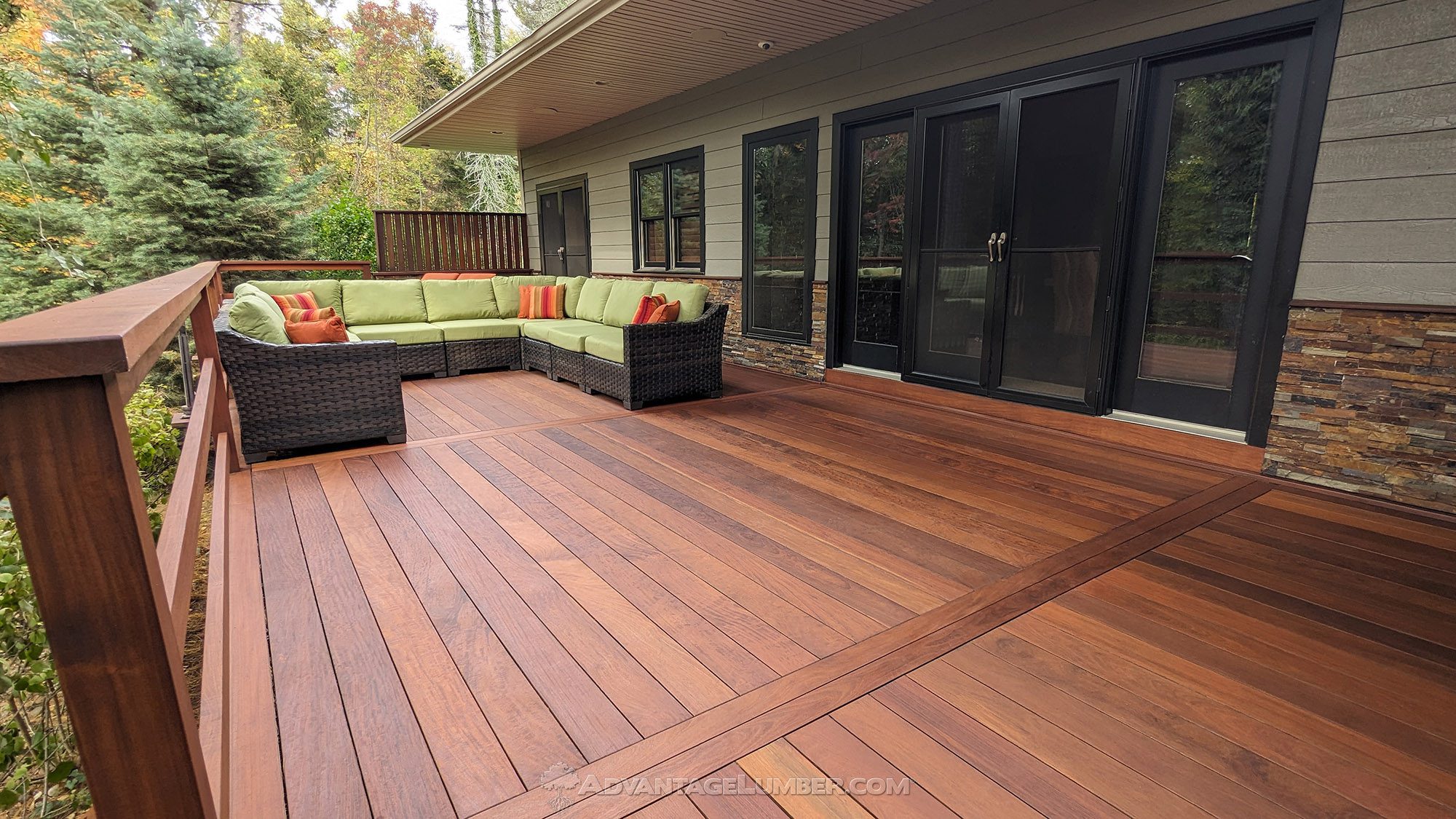When it comes to building an outdoor deck, choosing the right wood is critical—especially if your deck will be exposed to extreme sunlight. The material you select needs to withstand not just foot traffic and weather but also the relentless beating of UV rays, which can degrade many types of wood over time.
Let’s explore the options, starting with one of the most popular choices and why it might not be the best fit for sun-drenched climates, before diving into superior alternatives.
Pressure-Treated Pine: Common but Not Ideal
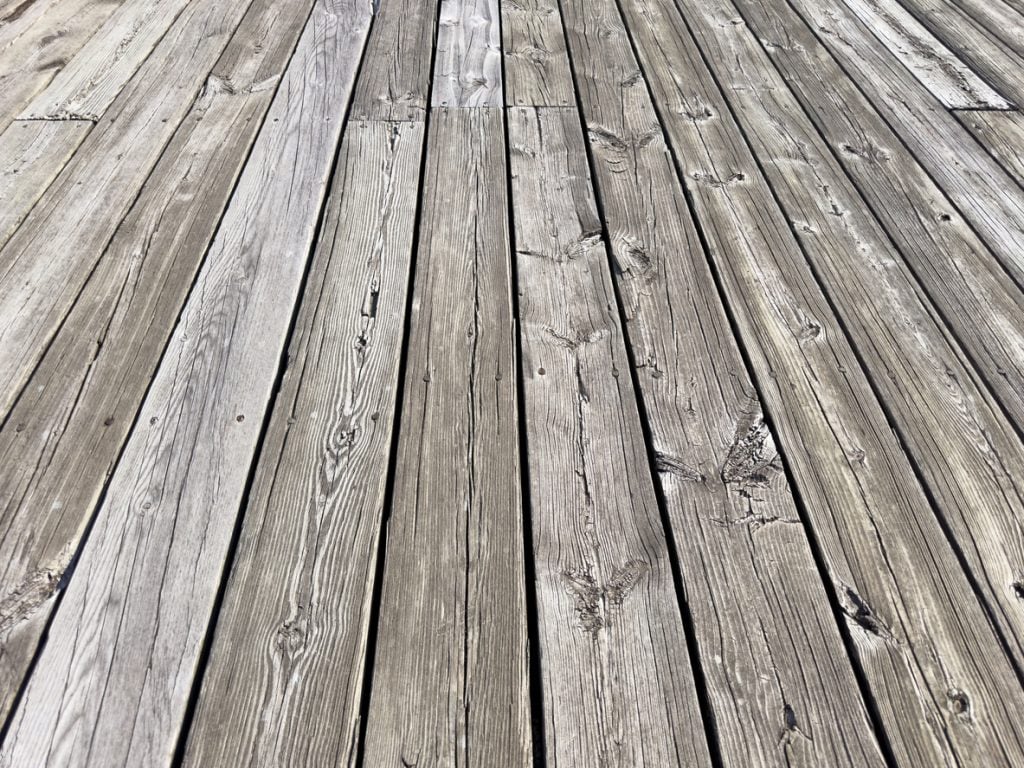
Pressure-treated pine is one of the most common woods used to build decks, and it’s easy to see why. It’s widely available, budget-friendly, and treated with chemicals to resist rot and insect damage, making it a go-to for many homeowners.
However, despite its popularity, it’s far from the best choice for decks in extreme sun conditions. The issue lies in a phenomenon known as sun rot. Softwoods like pressure-treated pine, when exposed to prolonged, intense sunlight, tend to dry out excessively. This causes the wood to become brittle, leading to extreme cracking and splintering over time.
What starts as an affordable deck can quickly turn into an eyesore—and a safety hazard—requiring frequent maintenance or replacement. For regions with scorching summers or year-round sun exposure, pressure-treated pine simply doesn’t hold up as well as other options.
Hardwoods That Thrive in Extreme Sun
Fortunately, there are several wood species that excel in harsh, sun-intensive climates. These hardwoods are naturally dense, rich in oils, and resistant to the drying effects of UV rays, making them ideal for long-lasting, low-maintenance decks. Here are some of the best choices:
Ipe
Known as one of the toughest woods on the planet, Ipe (pronounced ee-pay) is a Brazilian hardwood with exceptional durability. Its tight grain and high oil content make it highly resistant to sun damage, weathering, and even insects. Ipe decks can last up to 75 years or more, even in extreme conditions, with minimal cracking and natural rot resistance.
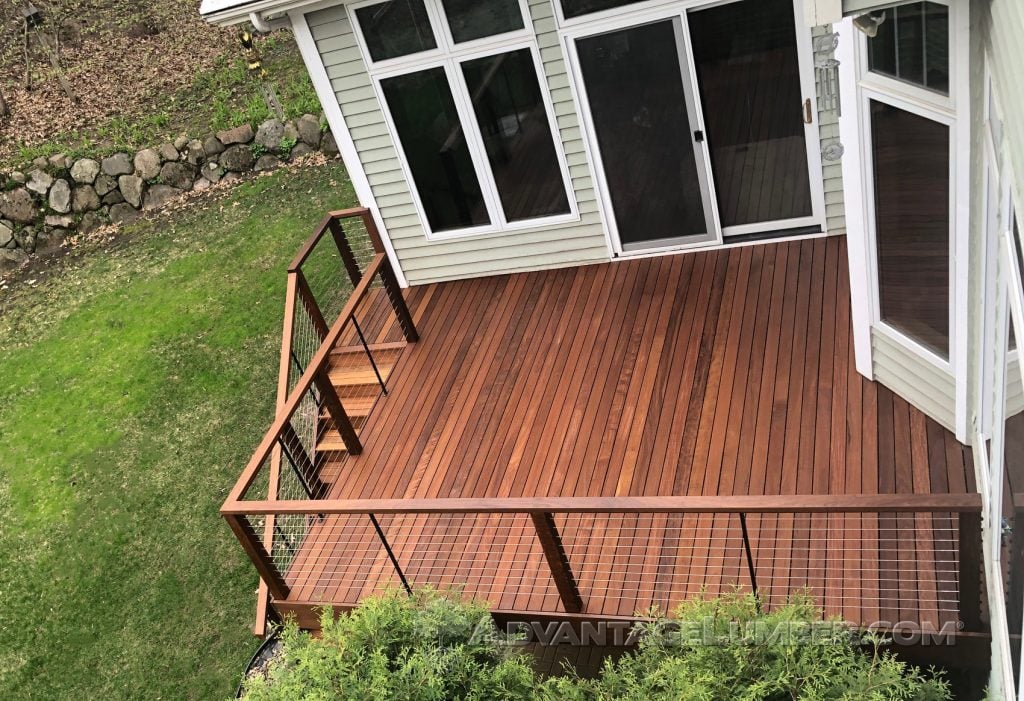
Cumaru
Often called Brazilian Teak, Cumaru shares many qualities with Ipe, including a rich, reddish-brown hue and incredible strength. It stands up to intense sunlight without drying out or splintering, making it another excellent choice for sun-exposed decks. Cumaru offers a 50+ year lifespan without any chemical treatment.
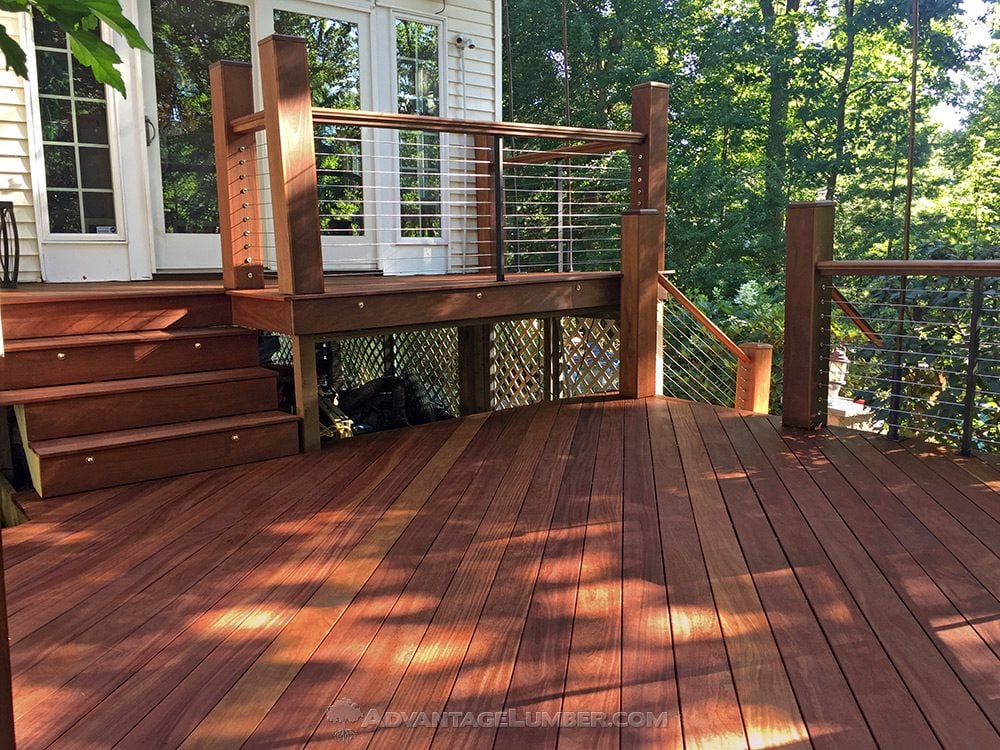
Tigerwood
With its striking, striped appearance, Tigerwood isn’t just a visual standout—it’s also a practical one. This exotic hardwood resists sun rot and maintains its integrity under harsh UV exposure, offering both beauty and brawn. Tigerwood offers a 30+ year lifespan without any chemical treatment.
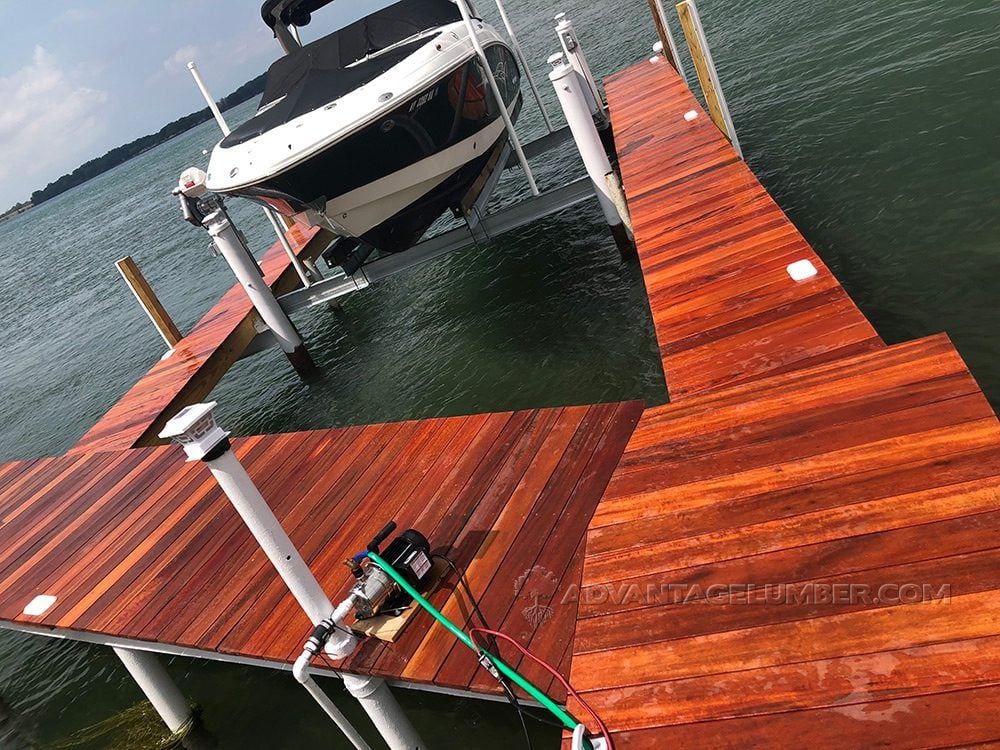
Teak
A longtime favorite for outdoor furniture and boat decks, Teak’s natural oils protect it from the sun’s drying effects. It weathers to a handsome silver-gray patina over time, making it a low-maintenance option for sunny climates. Teak offers a 30+ year lifespan without any chemical treatment.
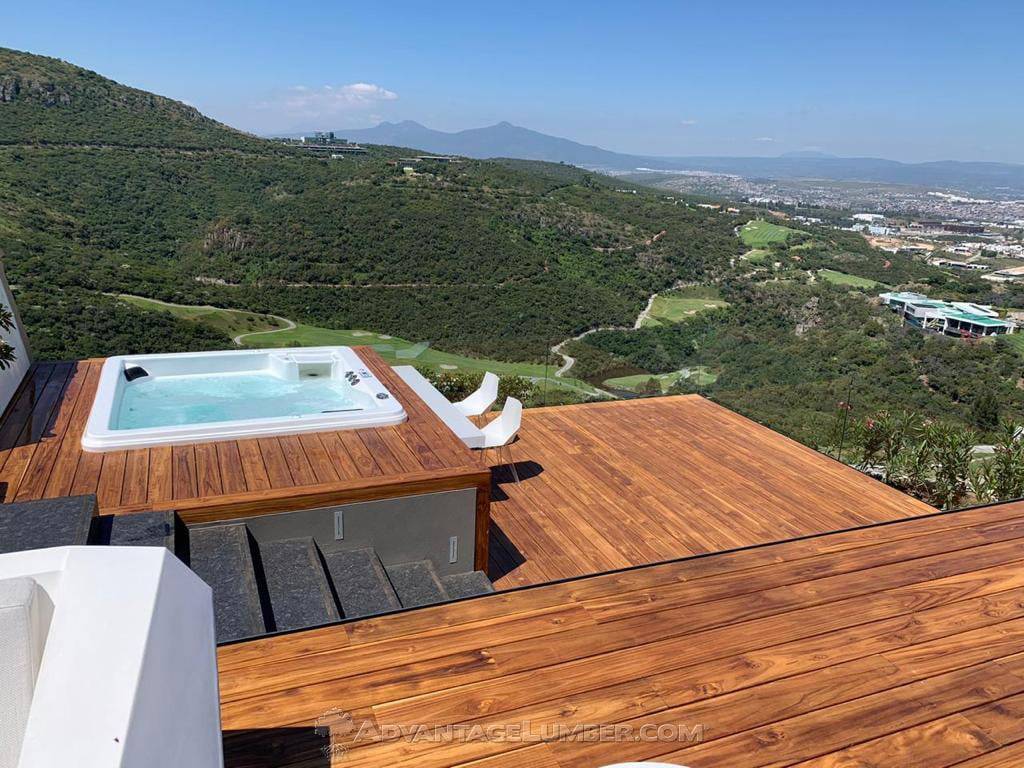
Garapa
Sometimes called Brazilian Ash, Garapa has a warm, golden tone and a dense structure that holds up well against extreme sunlight. It’s less prone to cracking than softer woods and offers a lighter aesthetic compared to darker species like Ipe or Cumaru. Garapa offers a 30+ year lifespan without any chemical treatment.
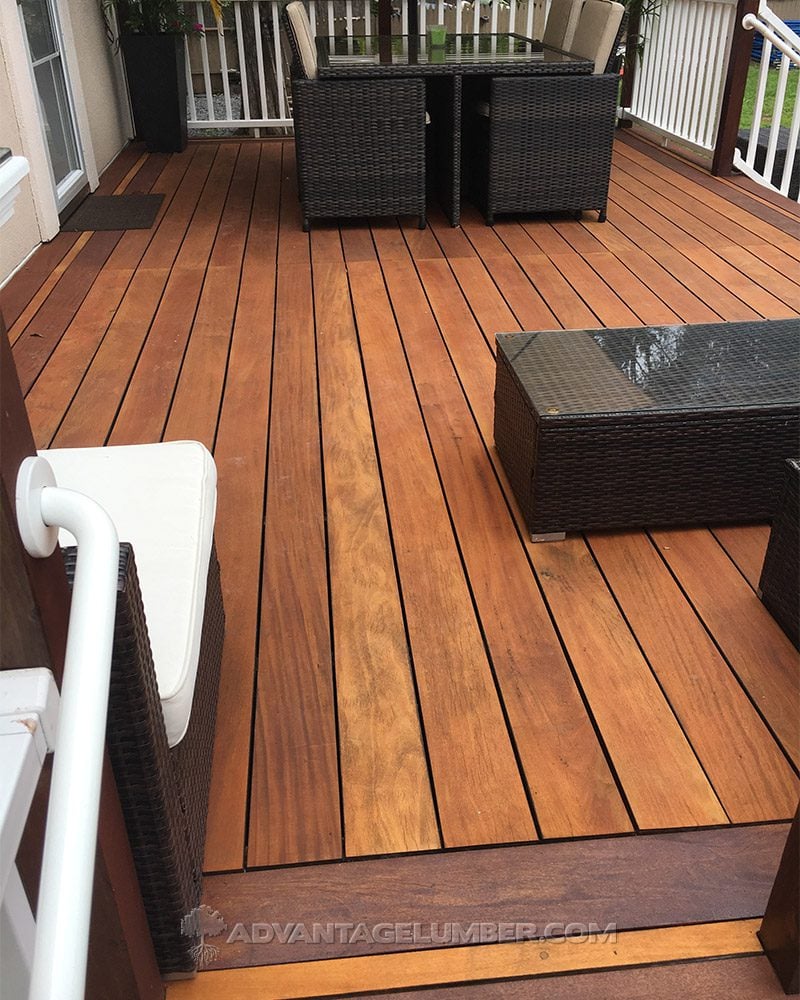
Brazilian Redwood
Also known as Massaranduba, Brazilian Redwood is a deep, reddish wood with outstanding resistance to sun, rain, and wear. Its durability makes it a solid contender for decks that need to endure punishing conditions. Brazilian Redwood offers a 40+ year lifespan without any chemical treatment.
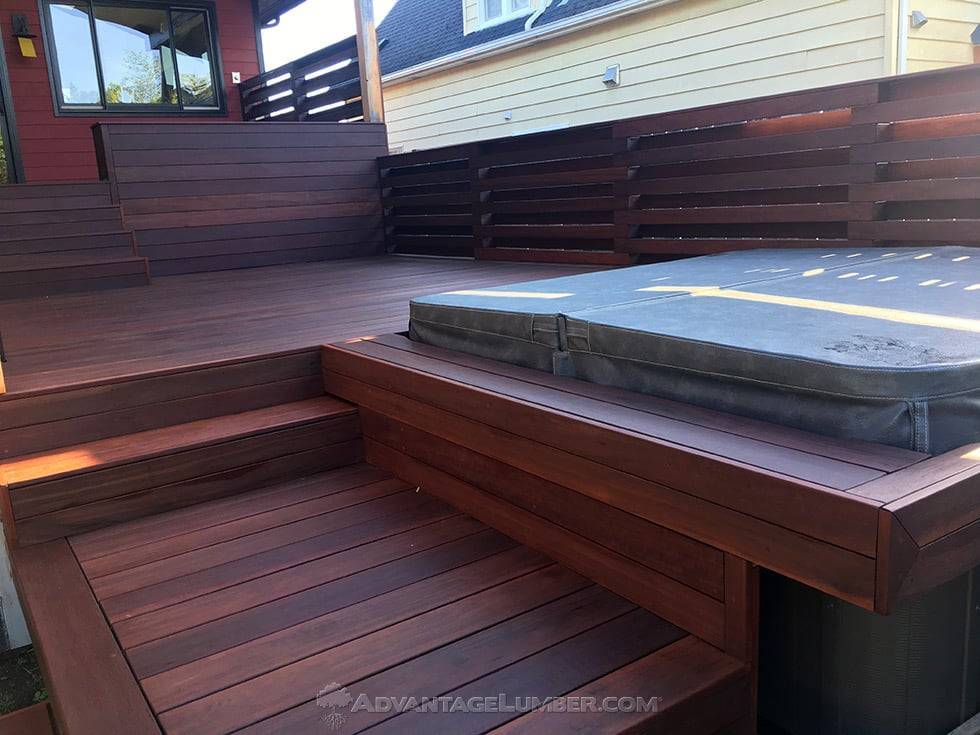
Mahogany
Mahogany’s rich color and tight grain make it a luxurious choice for outdoor decks. While it requires some maintenance to preserve its look, its natural resilience to sun and moisture keeps it from deteriorating as quickly as softwoods. Mahogany offers a 30+ year lifespan without any chemical treatment.
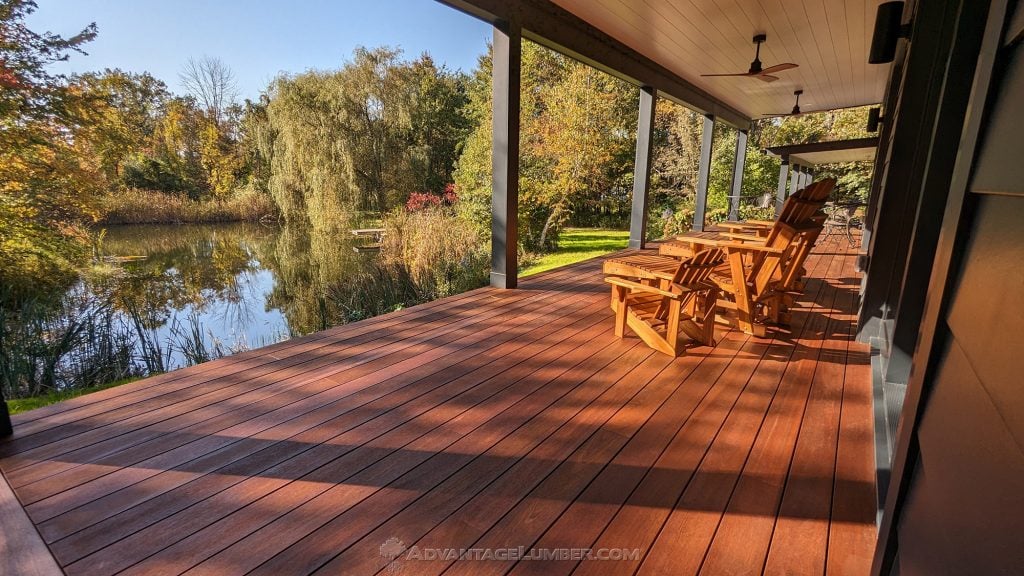
Why Hardwoods Win in the Sun
Unlike pressure-treated pine and other softwoods, these hardwoods have a natural advantage in extreme sun climates. Their density and oil content help them retain moisture and flexibility, preventing the brittleness that leads to cracking and splintering. While they come with a higher upfront cost, their longevity—often decades longer than pine—makes them a worthwhile investment. Plus, many of these species require little upkeep beyond occasional cleaning or oiling, saving you time and money in the long run.
Final Thoughts
If you’re building a deck in an area with intense sunlight, think beyond the short-term savings of pressure-treated pine. While it’s cheap and readily available, its susceptibility to sun rot makes it a poor choice for enduring extreme conditions. Instead, consider investing in a hardwood like Ipe, Cumaru, Tigerwood, Teak, Garapa, Brazilian Redwood, or Mahogany. These woods not only survive but thrive under the sun, delivering a deck that’s as durable as it is beautiful. Your outdoor space deserves a material that can handle the heat—literally and figuratively.
